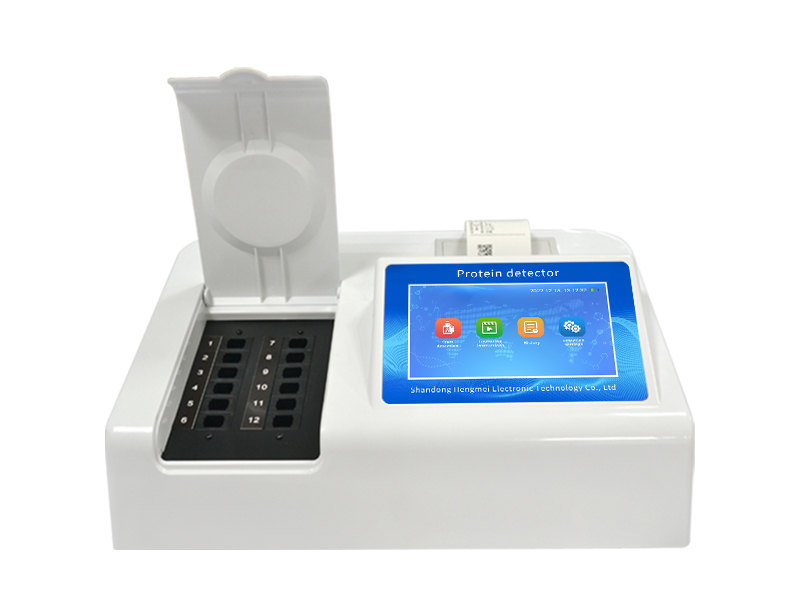Protein is the fundamental substance of life activities, and its content is the core indicator for evaluating food nutrition, feed quality, and raw material purity. As a specialized device for measuring protein content, protein detectors play an irreplaceable role in fields such as food processing, animal husbandry, and scientific research testing.

The importance of protein detectors
The protein content is directly related to the nutritional and commercial value of the product. In the food industry, protein is the core indicator for measuring the nutritional value of dairy products, meat, grains, etc., and its content labeling must comply with national standards; In feed production, protein levels determine the nutritional value and breeding effectiveness of feed; In raw material procurement, protein content is a key basis for pricing and quality grading.
Protein detectors can provide data support for enterprise quality control by accurately quantifying protein content, helping regulatory authorities regulate the market, and allowing consumers to obtain authentic nutritional information. Therefore, it is an important tool for ensuring product quality and maintaining market order.
Technical advantages of protein detectors
System stability and reliable performance: The optical system adopts imported ultra-high brightness light-emitting diodes, and the light source and detector are all solid-state structures with high accuracy and precision. The automatic switch design of the light source extends its service life to over 100000 hours, reducing maintenance costs and downtime risks.
Easy to operate, outstanding efficiency: built-in working curve, no need to prepare standard solution, only use matching reagents for zero point calibration to quantitatively determine. The sample color development and measurement are completed in the same 1cm colorimetric dish, without the need for transfer, reducing errors, and shortening the detection time of a single sample to within 30 minutes.
Fully configured and widely applicable: consisting of a host, sample pretreatment equipment, and reagent kit, it combines on-site rapid detection with laboratory precise analysis. Specialized prefabricated reagents and complete pre-treatment consumables provide one-stop service, reducing operational barriers.
Application areas of protein detectors
Food processing industry: In the production of dairy products, meat, and soy products, it is used for raw material acceptance and finished product testing to ensure that the protein content meets the label markings. For example, the protein content in milk needs to reach 3.0g/100g or more.
Feed production enterprises: detect the crude protein content in feed, ensure the nutritional value of feed, and avoid cost waste caused by insufficient protein affecting the growth of farmed animals or excessive protein.
Agricultural product procurement process: used for protein content testing of agricultural products such as grains and soybeans, as a basis for graded pricing. For example, the purchase price of high protein soybeans can be increased by 10% -20%.
Research laboratory: In nutrition, agricultural breeding and other research, precise determination of protein content in different samples provides data support for variety improvement and nutritional formula optimization.
Protein detectors have become the core tool for protein content detection due to their national standard methods, stable performance, and easy operation. It not only solves the problems of low detection efficiency and difficult operation in traditional methods, but also supports product quality control and fair commercial transactions through precise data.
Address of this article:http://www.hmfoodtesting.com/article/160.html


 Current
location:
Current
location:





